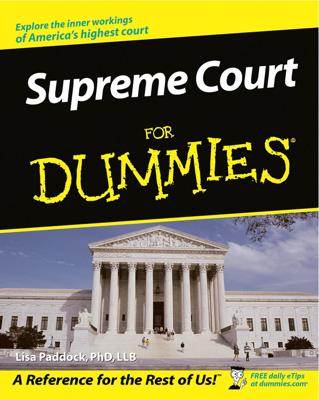Freedom of expression, as Justice Felix Frankfurter said, "is the well-spring of our civilization." Like other rights guaranteed by the First Amendment, free expression has two branches — freedom of speech and freedom of the press — which are both given blanket protection by the framers of the Constitution: "Congress shall make no law . . . abridging freedom of speech, or of the press." Today, these freedoms, by ensuring that the government does not interfere with public debate about public affairs, form the basis for policy making in the United States. And yet, virtually all of the case law drawing out the meaning behind the framers' plain words has been decided since the Second World War.
It seems clear enough that the Founding Fathers wanted to do away with the sometimes arbitrary punishment for seditious libel, or criticism of government they had seen handed out in England and by the English in the American colonies. And yet, political rivalries between those who believed in a strong federal government, the Federalists, and their opponents, the Antifederalists, led both parties to commit abuses. In 1798, fearing the Antifederalists' rhetorical support for the radical ideas being bandied about during the French Revolution, the Federalist-controlled Congress passed the Sedition Act, making it a crime to "write, print, utter, or publish . . . any false, scandalous and malicious" sentiments aimed at the government. Several newspapers and their publishers were convicted under the act before it expired upon the election of Thomas Jefferson in 1800. But in 1803, the Antifederalist (soon to be known as Republican) Jefferson himself was responsible for bringing libel charges against the Federalist editor Harry Croswell. Over time, however, libel became a civil, rather than a criminal matter, and political speech was granted the highest level of protection available under the First Amendment.
Neither the First Amendment nor the Supreme Court has specifically distinguished speech from press when it comes to freedom of expression. The Court is fond of saying that a journalist has no more rights under the Constitution than an ordinary citizen. This memorable maxim is misleading, however: Case law indicates that press defendants are granted more leeway when it comes to libel, and ordinary citizens are not permitted to express just any thought that comes into their heads.
The first significant free speech case to come before the high Court, Schenck v. United States (1919), presented the justices with a familiar scenario. While the First Amendment was apparently inspired — at least in part — by a backlash against laws prohibiting seditious libel, or treasonous statements, the law surrounding this subject remained muddy. Although Schenck did not arrive at the Supreme Court until after World War I had ended, it grew out of a violation of the 1917 Espionage Act, which prohibited interference with military recruiting.
Charles T. Schenck, who had served as general secretary of the Socialist Party, was accused with another man of printing and mailing 15,000 antidraft pamphlets to Philadelphia conscripts. The pamphlets urged recipients to resist the draft and refuse to participate in the war in Europe. Schenck defended himself by arguing that he had only been exercising his right of free speech. The Court, however, did not buy his argument, ruling 9-0 that the First Amendment did not trump the Espionage Act. In his opinion for the Court, Oliver Wendell Holmes considered the context of the speech as well as its content: "The question in every case is whether the words used are used in such circumstances and are of such a nature as to create a clear and present danger that they will bring about substantive evils that Congress has a right to prevent."
In time of war, Holmes reasoned, government had a right to limit conspiracies meant to undermine the war effort — even if they weren't successful: "[T]he character of every act depends upon the circumstances in which it is done. The most stringent protection of free speech would not protect a man in falsely shouting fire in a theater and causing a panic."
Later the same year, Holmes refined his clear and present danger test in his dissent in Abrams v. United States (1919), a case involving five Russian immigrant anarchists who were convicted of violating the Espionage Act of 1917 by printing and distributing leaflets calling for a general strike to protest the presence of U.S. troops in Russia. Holmes disputed the majority's use of his test in upholding the anarchists' convictions: Here, the danger was not imminent, and the intent was not to cripple the war effort, merely to protest U.S. intervention in Russia. More importantly, Holmes used the occasion to set forth a major theory of free speech:
[W]hen men have realized that time has upset many fighting faiths, they may come to believe even more than they believe the very foundations of their own conduct that the ultimate good desired is better reached by free trade in ideas — that the best test of truth is the power of the thought to get itself accepted in the competition of the market, and that truth is the only ground upon which their wishes can safely be carried out. That at any rate is the theory of our Constitution.
The clear and present danger test survived, but the Court adopted the interpretation of it that Holmes supplied in Abrams and refined — often in company with Louis D. Brandeis — in numerous subsequent dissents in free speech cases. Eventually the test would spin off a doctrine known as the time, place, and manner rule, which permits government to control the time, place, and matter of speech. Any restriction must be neutral concerning the content of the speech and must not — even incidentally — interfere with the free flow of ideas. Customarily such restrictions take the form of requiring licenses to control use of public forums, public places traditionally associated with demonstrations or speech making, such as streets, parks, and so on.

